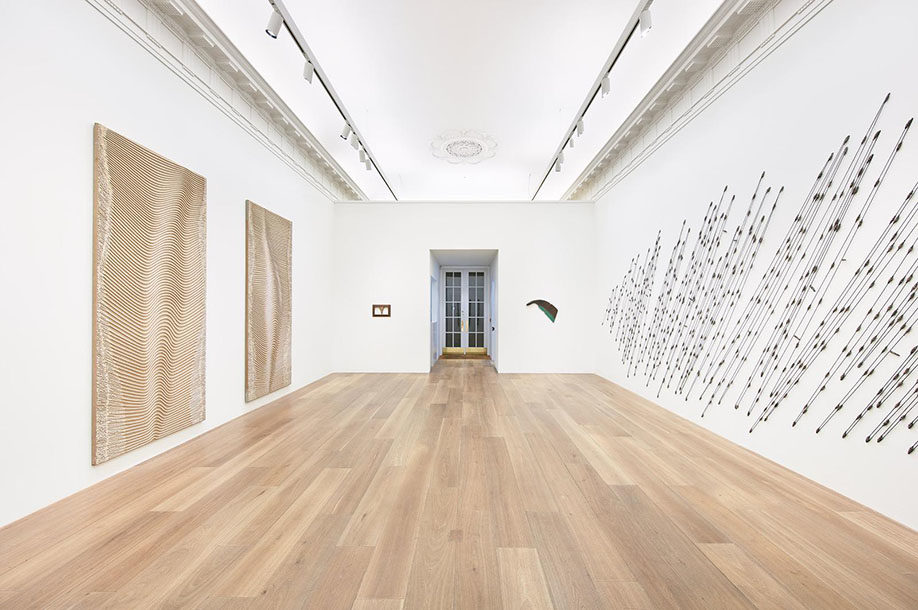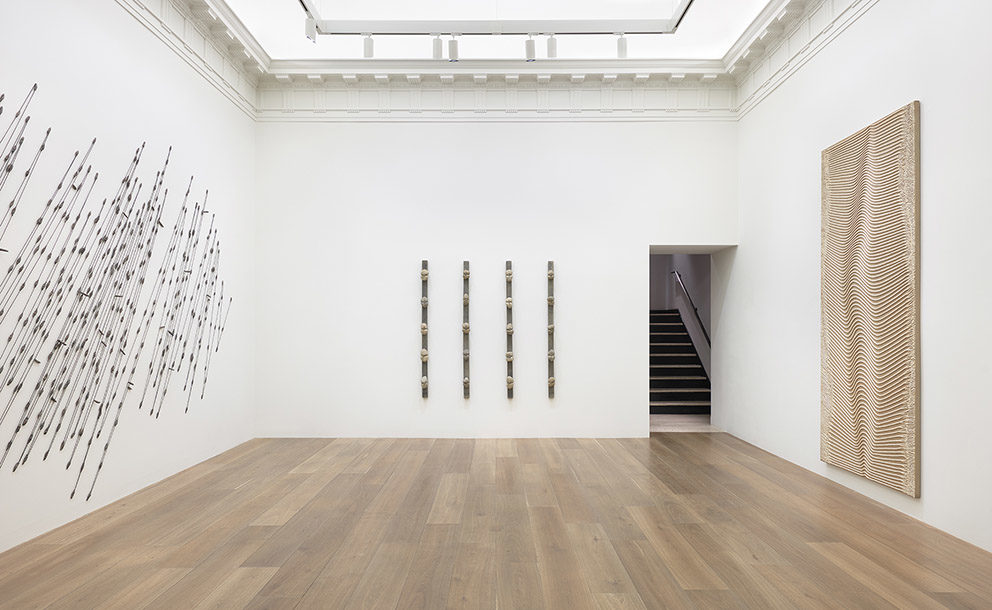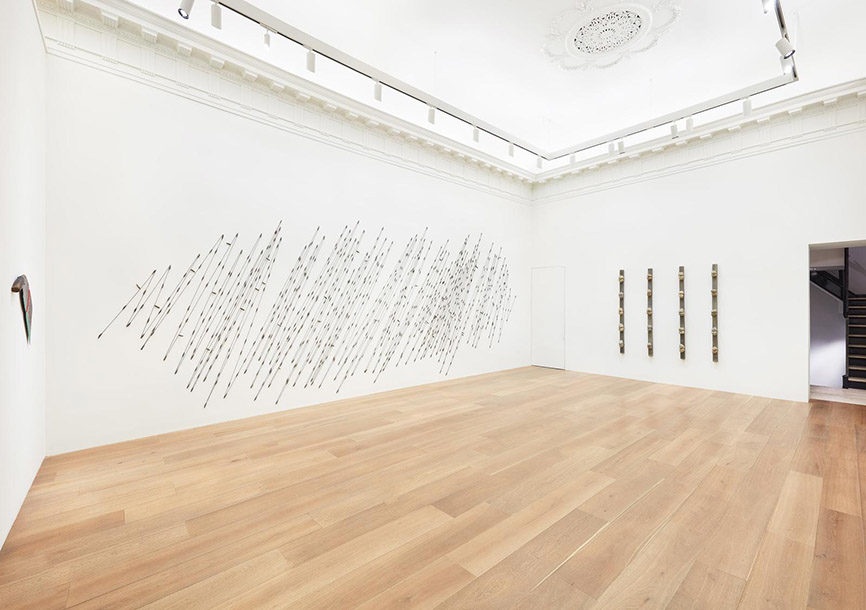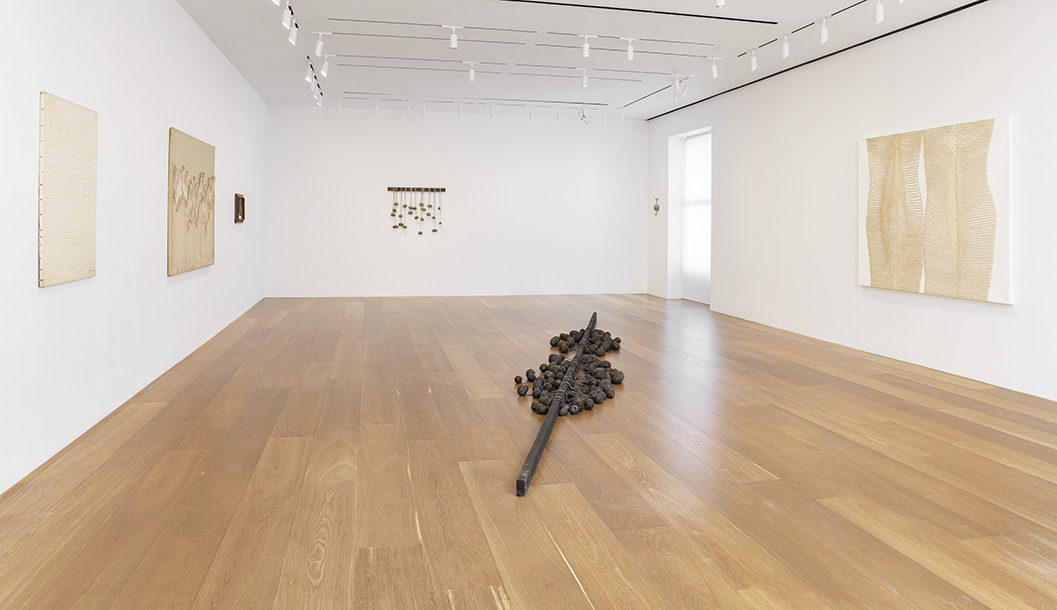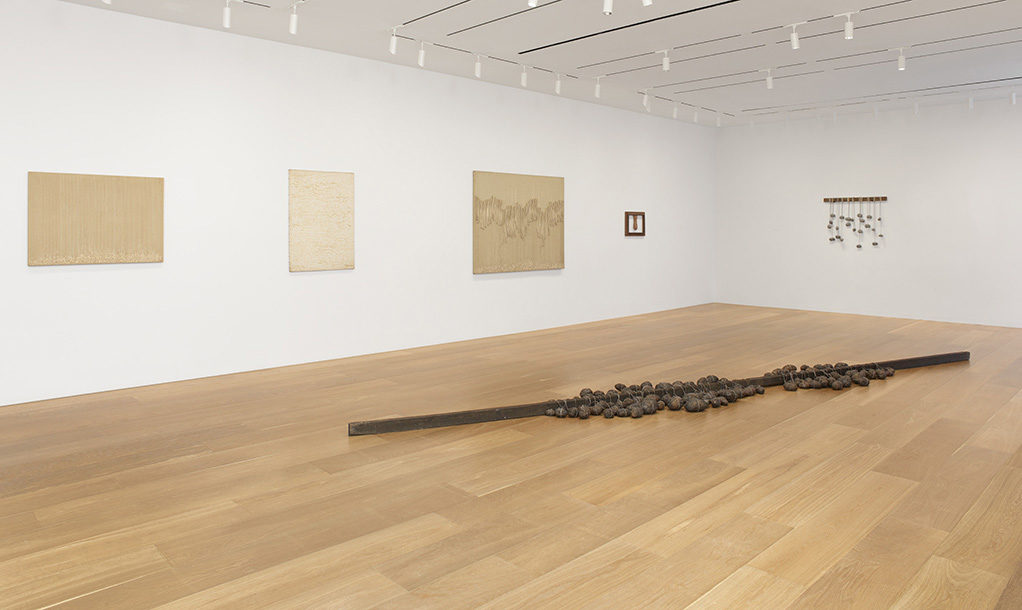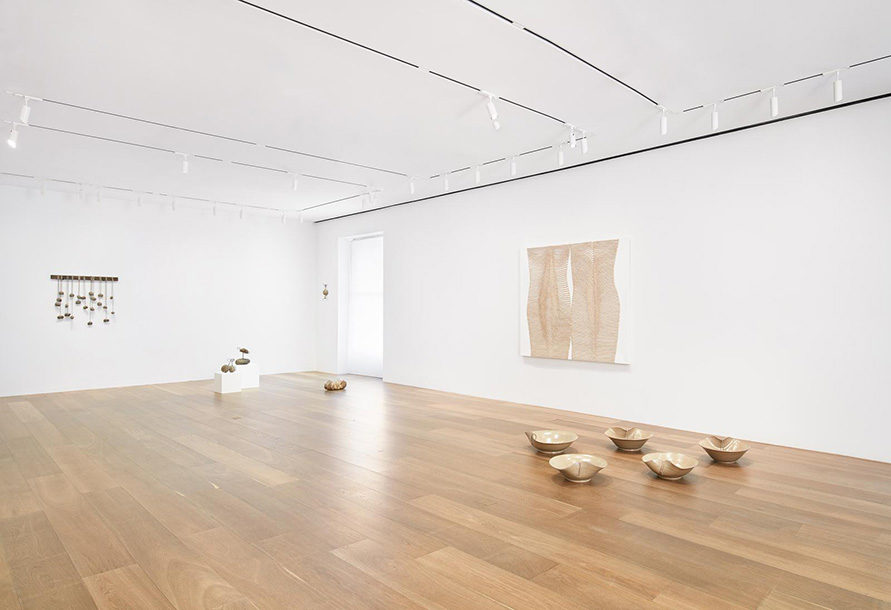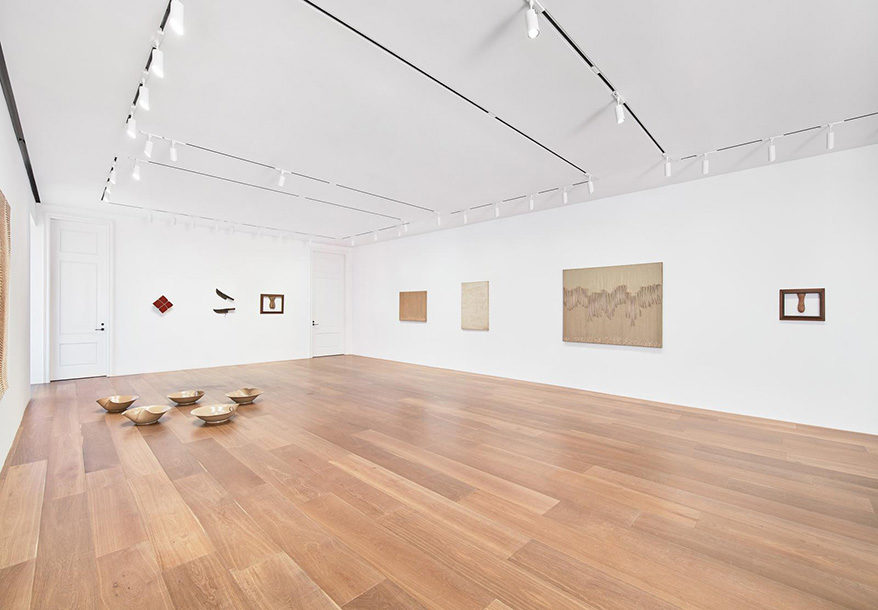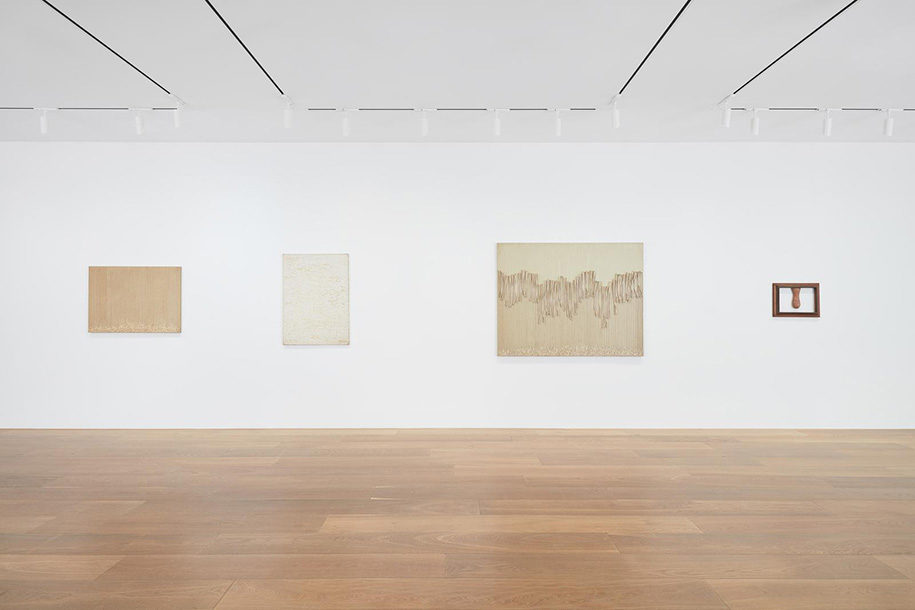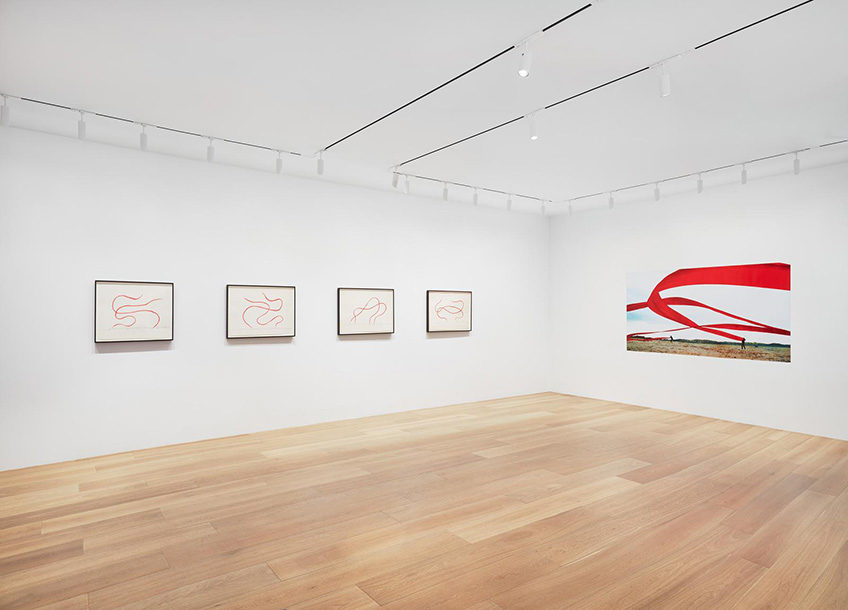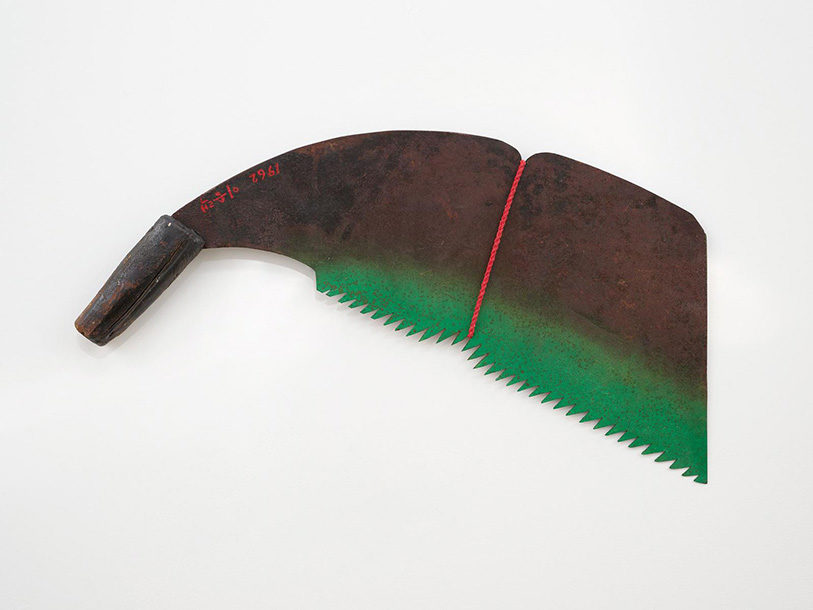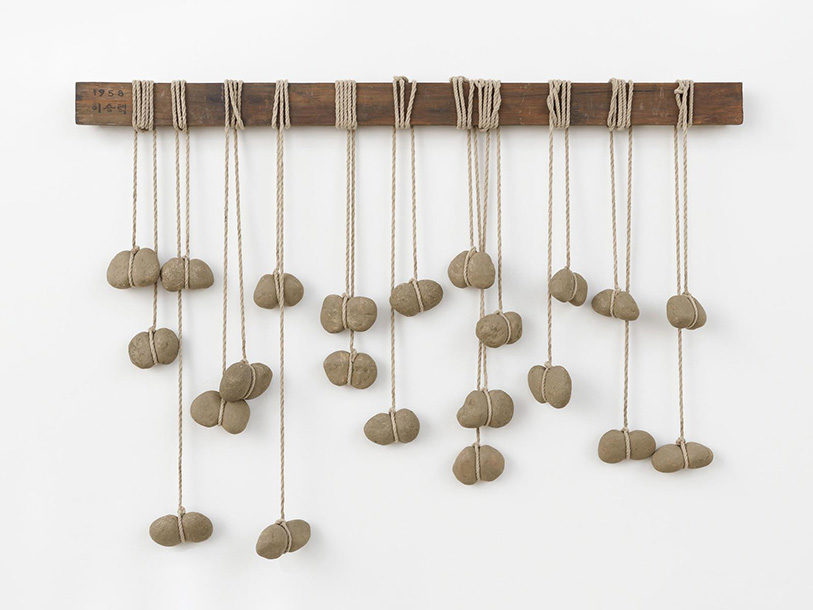
Seung-taek LeeExhibitions
Seung-taek Lee
New York – Lévy Gorvy is pleased to announce an exhibition of Korean artist Seung-taek Lee (b. 1932). Presented in collaboration with the artist and Gallery Hyundai, Seoul, this marks the first solo exhibition of Lee’s work in the United States. Lee’s experimental practice holds an influential place in the history of Korean art. Throughout his six-decade career, he has continually challenged traditional notions of identity and history, forging new paths for the artistic expression of nature, philosophy, and spatial experience.
This exhibition will celebrate Lévy Gorvy’s representation of Lee with 40 works spanning the late 1950s to the present day. These include his 1960 Non-Sculpture, recently on view at Haus der Kunst, Munich; photographs from his 1971 performance, Wind-Folk Amusement; and several Wind paintings from the 1960s through the present wherein curving lengths of rope give shape to the ephemeral movements of air. A fully illustrated catalogue featuring an interview of the artist by Hans-Ulrich Obrist, an essay by curator and scholar Hui Kyung An, and a specially commissioned poem by Mónica De La Torre will accompany the exhibition.
A solitary figure unbound by the strictures of any movement or group, Lee moves between the material and the metaphysical. Privileging no single medium, his oeuvre spans several, incorporating aspects of painting, drawing, sculpture, installation, and performance, often within the same piece. Notions of negation—which he alternately refers to as “dematerialization,” “anti-concept,” and “non-sculpture”—structure his approach, by which he transforms ordinary objects, imbuing them with multiple meanings and affects. Embracing invisible forces and unorthodox materials such as tree branches, wire, stones, human hair, fabric, and rope, his art elevates the mundane to the level of myth. At once emphatically abstract and culturally specific, it draws on the subtle, unassuming beauty of Korean aesthetic traditions and folk art. Rooted in a concrete poetics of place, it reflects contemporaneous developments in Earth Art, Mono-ha, and Post-Minimalism while maintaining resolute independence from its peer groups.
In 1958, Lee began his Godret Stone series, whose title alludes to the small stones used by Korean artisans to weight traditional mats while weaving. Grooved and hung from wooden bars with rope, the stones appear to float, thus belying their solid physicality. Such suspensions of expectation are typical of Lee’s practice, which lingers on the discrepancies between appearance and reality. Beginning in the late 1960s, he turned to the representation of immaterial phenomena in nature such as wind, fire, water, smoke, and fog. His fascination with the extra-physical led him to understand the artist’s task as “connecting different worlds in search of another realm,” as he aptly described.
Lee’s work resides in the permanent collections of museums and institutions worldwide, including the Tate Modern, London; the National Museum of Modern and Contemporary Art, Korea, Seoul; and the Museum of Contemporary Art Australia, Sydney. Solo exhibitions of Lee’s work have been held at the Sungkok Art Museum in Seoul and the Nam June Paik Art Center in Yongin. He received the Nam June Paik Art Center Prize in 2009 and the Eungwan Order of Cultural Merit from the Korean Ministry of Culture in 2014.
Selected Works
Video
Seung-taek Lee Exhibition
April 6, 2017
Selected Press
ZEALnyc | Art Break: South Korean Artist In First Solo Exhibition in U.S. at Lévy Gorvy
April 20, 2017
Hyperallergic | The Avant-Garde Oeuvre of a Classically Trained Sculptor from North Korea
April 13, 2017
The New York Times | Winds From Seoul
November 24, 2016

